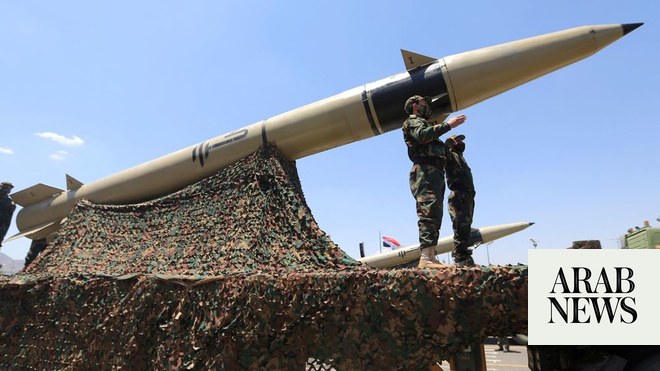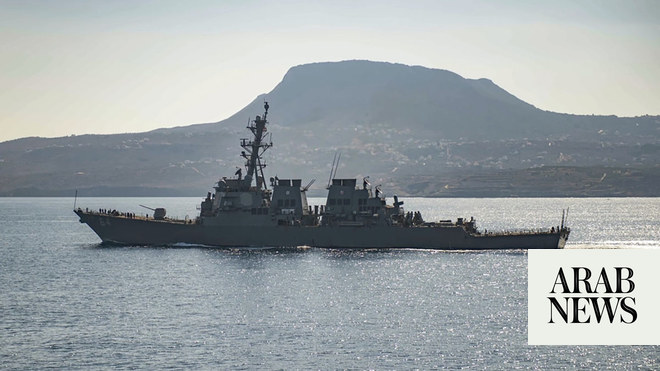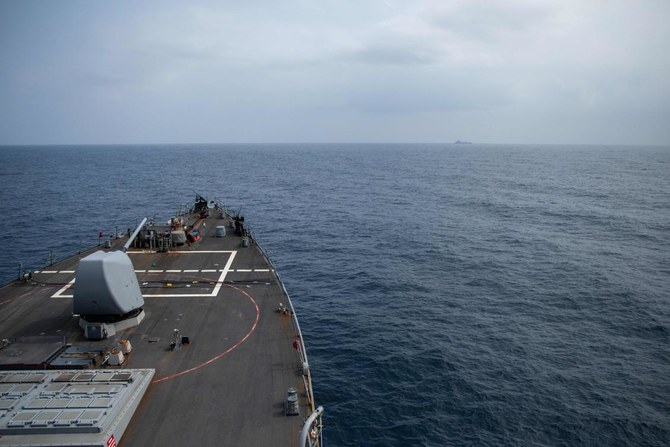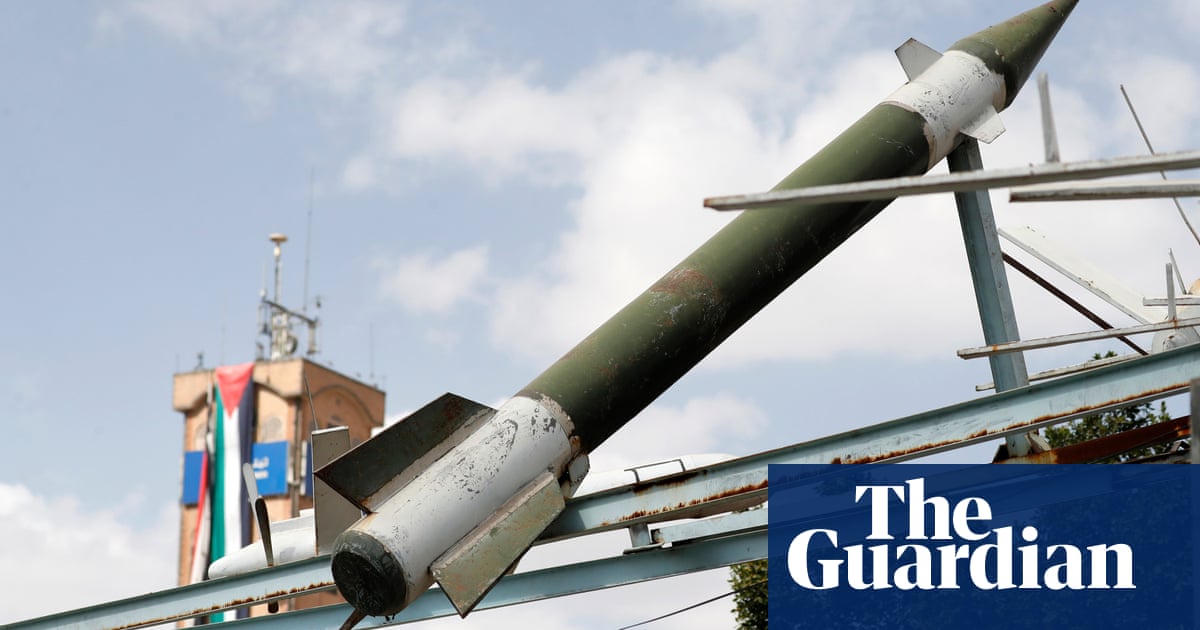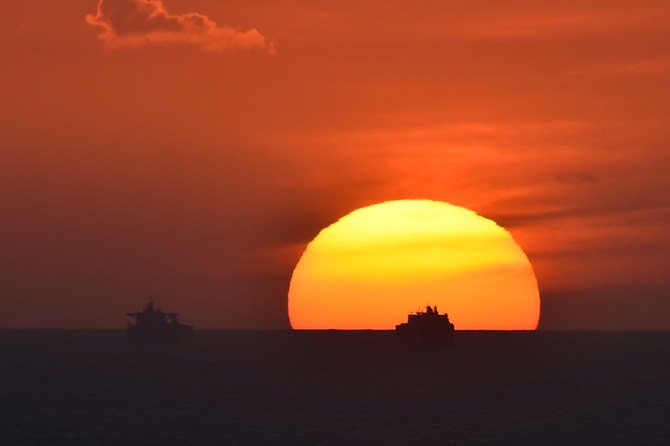
The BP-chartered Aigeorgis was on Friday heading toward the Cape of Good Hope
The US last week announced a naval coalition involving 20 countries
WASHINGTON/HOUSTON: Iran was “deeply involved” in planning operations against commercial vessels in the Red Sea and its intelligence was critical to enable Yemen’s Houthi movement’s targeting of maritime vessels, the White House alleged on Friday.
“We have no reason to believe that Iran is trying to dissuade the Houthis from this reckless behavior, White House national security spokesperson Adrienne Watson said in a statement.
Meanwhile, at least two ships transporting oil or oil products between the US Gulf Coast and India on Friday were re-routing from the Red Sea, according to vessel tracking data, as a US-led coalition geared up to help safeguard vessels from attacks by Yemen’s Houthi militants.
Iran-backed Houthis, who say they are supporting Palestinians under siege by Israel in the Gaza Strip, have attacked commercial shipping with drones and missiles, forcing shippers to change course and take longer routes around the southern tip of Africa.
The Aigeorgis, which was chartered by BP to carry vacuum gasoil (VGO) from India’s Jamnagar to Texas, on Friday was headed along Africa’s East Coast toward the Cape of Good Hope, according to financial firm LSEG’s ship tracking data.
BP’s VGO shipments from Jamnagar historically moved through the Red Sea. The new route adds nine days to the journey between India and the US Gulf Coast. VGO is a refining feedstock used to produce gasoline and diesel.
A BP spokesperson declined to comment on the Aigeorgis but referred to an earlier statement on its decision to re-route ships. The company had said on Tuesday it would avoid the Red Sea and route vessels around the Cape of Good Hope.
The Sonangol Cabinda, chartered by Equinor to carry crude oil from Texas to India, did a 180-degree turn in the middle of the Red Sea on Thursday and was moving through the Suez Canal toward the Mediterranean, LSEG tracking data showed.
The US said the naval coalition announced last week involved 20 countries. Some have not confirmed their participation, however, while others have said operations to protect Red Sea commercial traffic will be as part of existing naval agreements. The lack of practical details for shippers has caused confusion for those still avoiding the region.
“We have also paused new activities that involves transit through the region,” an Equinor spokesperson said on Tuesday. Ships currently in the region were being rerouted or paused, the spokesperson said.
The Houthi attacks have led shippers to change routes, causing several African ports to become overwhelmed with the number of ships entering their waters.
“War risk premiums for tankers traveling via the Red Sea have been rising of late so that can make the longer (Cape of Good Hope) route a slightly less bitter pill for charterers,” said Jay Maroo, an analyst at energy data firm Vortexa.
Multiple tankers departing ports east of Suez bound for non-US destinations have also changed course or re-routed to avoid the Red Sea. Other tankers re-routing include the Bow Olympus, chartered by Equinor, according to data from LSEG. The tanker left the US Gulf Coast on Dec. 10 and re-routed while crossing the Atlantic for Suez, making a 90 degree turn, and set its destination to Durban, South Africa.
Meanwhile Almi Globe, chartered by BP, according to LSEG shipping data has also done a U-turn in the Mediterranean. The vessel had been heading for Suez until Thursday when it changed its destination to Las Palmas, Spain.






